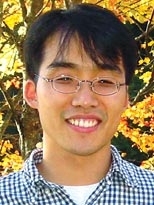Mechanical engineering graduate student Chulmin Joo is the first recipient of the Hatsopoulos $50,000 Innovation and Thesis Award.
The award is named for George Hatsopoulos, an MIT alumnus and entrepreneur whose doctoral thesis provided the basis for what is now a $2 billion high-tech firm. Hatsopoulos, who created the award this past February, announced the winner in July along with mechanical engineering department head Rohan Abeyaratne.
The prize is designed to recognize original research that leads to a patentable invention or innovation. Joo won for his original research that improves the method by which clinicians can view cells and molecules both clearly and accurately.
"MIT students, faculty and alumni have produced most of the best new ideas in engineering and technology during the past century, and it looks like that trend will continue into the next century," said Hatsopoulos, commenting on many proposals reviewed for this first-ever honor.
More than 50 years ago, during his doctoral studies at MIT, Hatsopoulos hit upon the concept of transforming heat energy into electrical energy. The idea ultimately formed the basis for his company, Thermo Electron Corp. Rich in resourcefulness but, like any graduate student, poor in resources, Hatsopoulos persuaded the School of Engineering to invest seed money in his new idea. Shortly thereafter, an angel investor put up $50,000 to transform the subject of a doctoral thesis into a bricks-and-mortar enterprise.
Fifty years later, Chulmin Joo, a South Korean doctoral student who received his master's degree in mechanical engineering two years ago, was able to convince a three-judge panel, which included Hatsopoulos, that his idea -- officially titled "Spectral Domain Optical Coherence Reflectometry for Highly Sensitive and Selective Detection of Biological and Chemical Species" -- is the next big thing.
A version of this article appeared in MIT Tech Talk on September 28, 2005 (download PDF).






